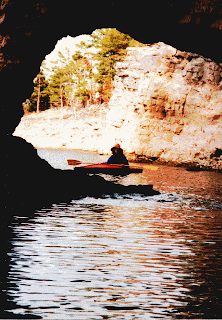
I first began logging my cycling miles back in 2002 when David was hiking the Appalachian Trail. That trail is 2,175 long--running from Springer Mountain, Georgia, to Katadin Mountain, Maine. Most through-hikers try to complete the trek in about six months heading north from late April to early October (before the first fall snow closes the last wilderness section in Maine). It's an amazing athletic accomplishment. To complete it, one must average hiking twelve miles a day--though rain or shine, heat or cold, every single day--carrying 30 to 60 pounds on one's back. It's the hiking equivalent of the Tour de France.
During David's trip, Sue and I were his home support team, sending occasional boxes of dried food to various post offices along his route. In an effort to keep up with him vicariously, we decided to hike or bike as far each week as he did. . . . And so began our habit of logging our biking miles.
That first year I was able to finish the AT trail in September and went on to record about 3,000 miles for the period from May through December. In subsequent years I have usually set a very informal goal of attempting to ride 5,000 miles during the calendar year--and have only actually achieved that goal once! Riding 5,000 miles a year is basically the tipping point that separates the men from the boys among cycling enthusiasts. It doesn't sound like much when compared with hiking the Appalachian Trail, but life is not just cycling and a year is not just filled with pleasant sunny days. To hit 5,000 miles one has to ride 100 miles a week for 50 weeks of the year (granting two weeks off for vacation). My typical ride is 32 miles, so that makes it three rides a week. Pretty manageable -- until you start to add in weeks of bad weather, weeks of illness, weeks of other activities (kayak trips, visits to family, etc.).
Here, for example, is the summary of my biking log for 2008 so far:
Jan -- 287.4 -- 10 rides
Feb -- 218.1 -- 8 rides
Mar -- 377.1 -- 12 rides
Apr -- 247.8 -- 8 rides
May -- 339.8 -- 11 rides
Jun -- 566.3 -- 21 rides
Jul -- 550.8 -- 17 rides
Aug -- 607.8 -- 19 rides
Sep -- 481.6 -- 13 rides
Oct -- 426.2 -- 14 rides
Nov -- 428.6 -- 15 rides
Total as of 11/28/08 = 4,531.5 miles
The shortest ride I bothered to record was 7.2 miles, one of several where I used my mountain bike to pedal back to the car after a river float with Sue. Only four rides were longer than a "metric century"--100 kilometers or 62.5 miles. Twenty rides were "time trials"--rides on my normal 31.5 mile route at a pace fast enough to be worthy of recording in my log (i.e., 16 mph or better).
I now face one of the coldest months of the year, and I still have 470 miles to go if I am to reach 5000.
Will I make it?






